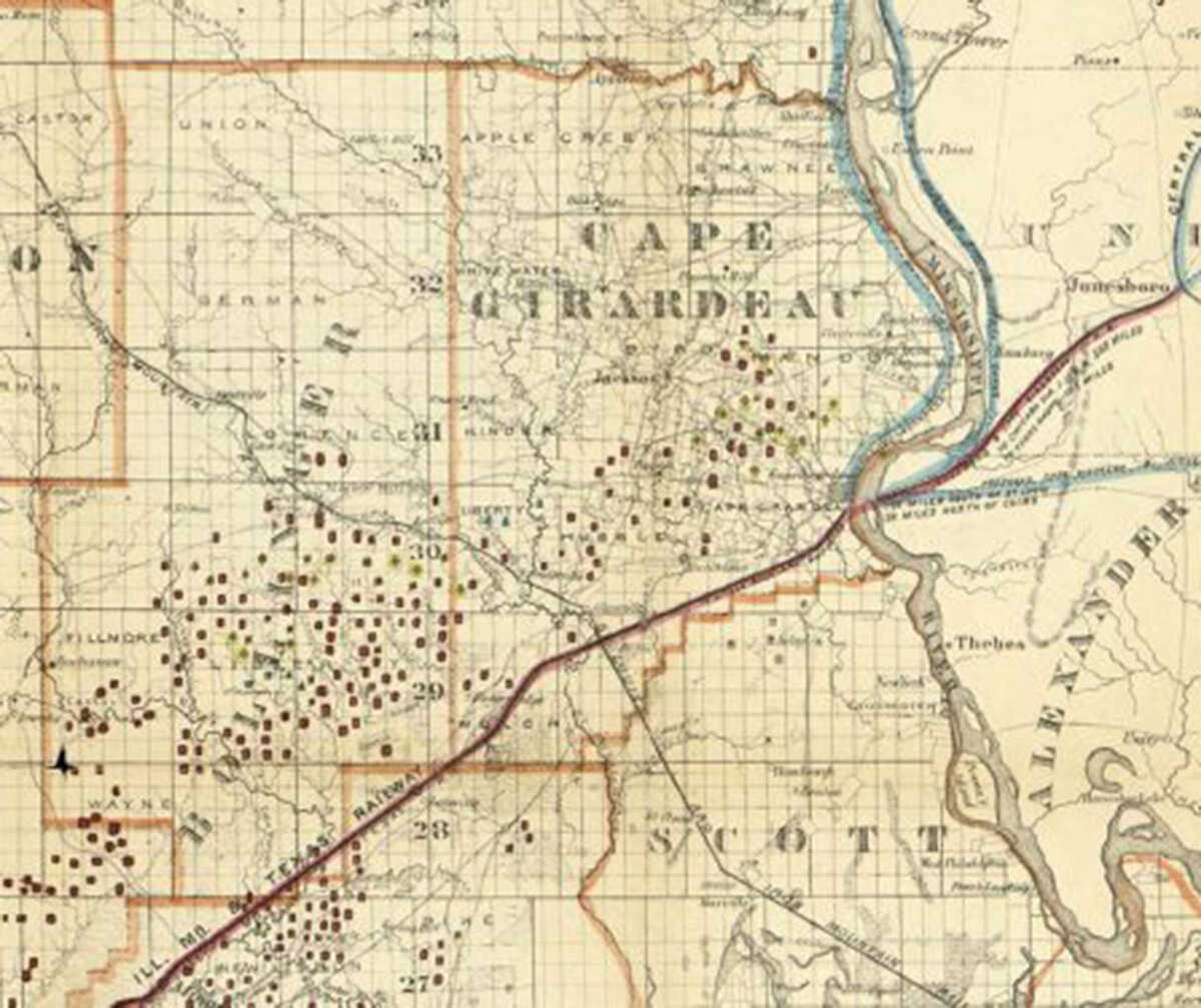The Mississippi River bridge that never was
Cape Girardeau was poised for greatness on March 20, 1871, when the Missouri legislature authorized the construction of a railroad bridge across the Mississippi River here. This permission was granted to former state governor Thomas C. Fletcher, who had just organized the Illinois, Missouri & Texas Railway. ...
Cape Girardeau was poised for greatness on March 20, 1871, when the Missouri legislature authorized the construction of a railroad bridge across the Mississippi River here.
This permission was granted to former state governor Thomas C. Fletcher, who had just organized the Illinois, Missouri & Texas Railway. As the grandiose name suggested, this venture promised to build a railroad from Cape Girardeau to the southwest. In addition, a bridge would be constructed to join various proposed rail lines in Southern Illinois.
In 1873, the company published a prospectus to appeal to investors, particularly from England. This document, available online at archive.org, features some of the wildest claims ever made about Cape Girardeau's potential.
According to the prospectus, "Within a few years this section of the country will not be surpassed in variety and value of its products by any other section. All that it needs is railroad facilities, capital and energy, to develop the numerous great natural sources of wealth."
To support this point, the prospectus quoted excerpts from another fine piece of boosterism, the book "Saint Louis, the Future Great City of the World" by L.U. Reavis. The author had tirelessly promoted St. Louis as a world-class metropolis, and even spearheaded a campaign to move the nation's capital to Missouri.
Reavis heaped praise on Cape Girardeau, stating that the natural resources in the region "will certainly bring about at no distant day the establishment of such manufactories of iron, wood, cotton, crockery, queensware, paints, etc., as will make the Cape the most important manufacturing point on the banks of the Mississippi River from St. Paul to New Orleans."
The prospectus listed several other railroads that were projected to connect with Cape Girardeau. This radiating system "will confer great importance to their center, and will in a few years ensure the building of a bridge across the Mississippi River -- the charter of the same having already been obtained; a solid rock bottom at a depth of from 15 to 2- feet below low water, making the enterprise of comparatively easy accomplishment."
Of course, the company failed to deliver on these promises. In September 1873, a financial panic and subsequent economic depression put an end to the nation's railroad building mania. Despite a huge investment, including $300,000 in bonds supported by local taxpayers, the company had very little to show for its efforts: two miles of tracks and 40 miles of graded earth. It would take decades for the bonds to be paid off.
Louis Houck later brought the first railroad to Cape Girardeau on Jan. 1, 1881. This delay in joining the railroad age, along with a decline in steamboat traffic, left Cape in a serious economic lurch. The city did gain access to railroads in Illinois -- but only via unreliable ferry crossings.
If a bridge had been built at Cape in the 1870s, the city's history would be vastly different. The vision of Cape as a manufacturing center of national importance may have come to fruition.
Connect with the Southeast Missourian Newsroom:
For corrections to this story or other insights for the editor, click here. To submit a letter to the editor, click here. To learn about the Southeast Missourian’s AI Policy, click here.










